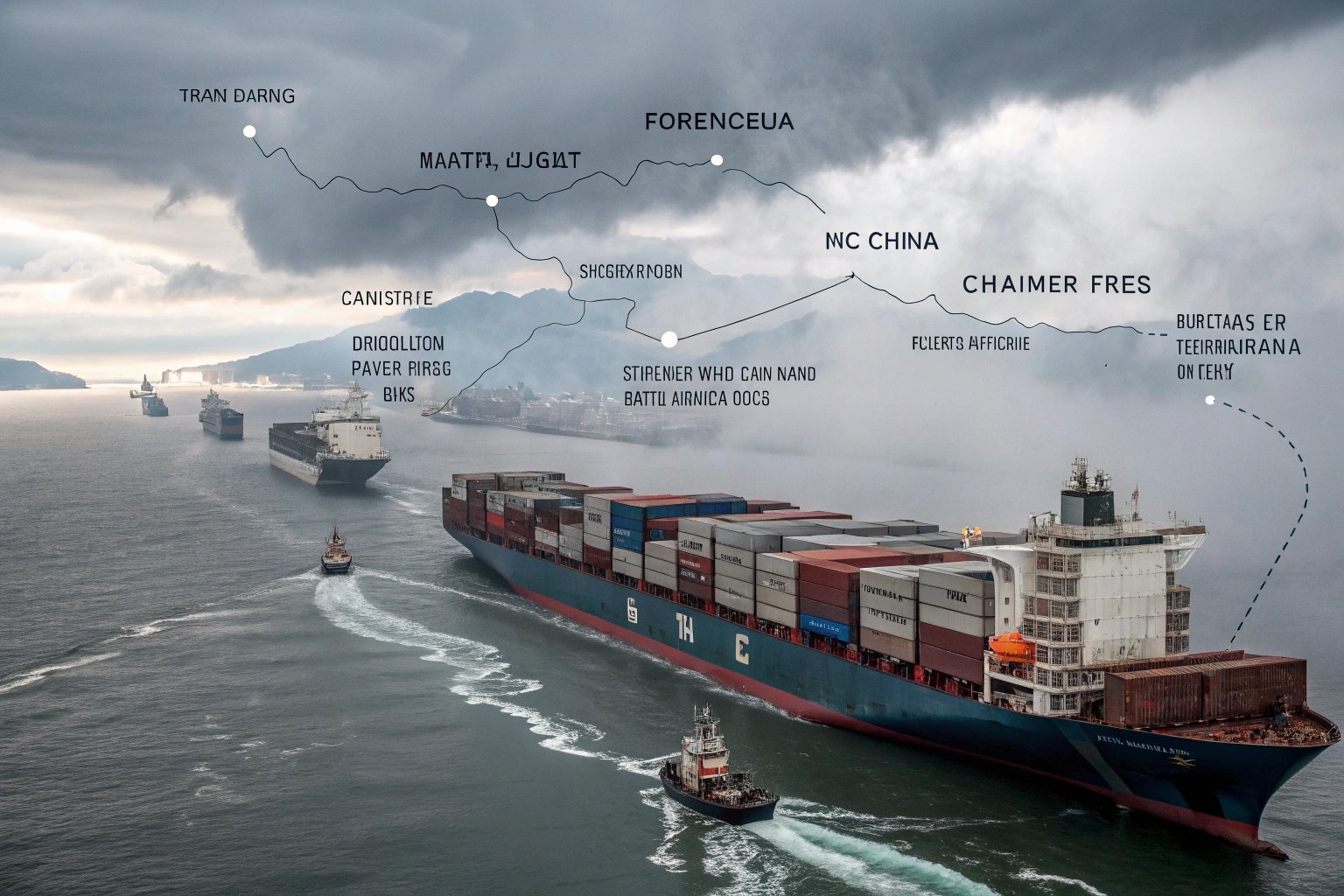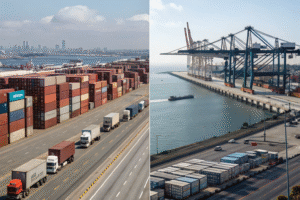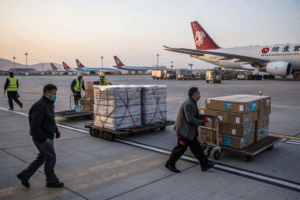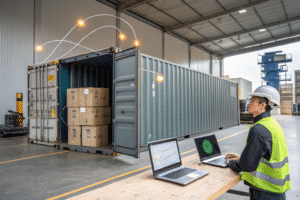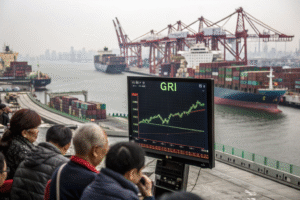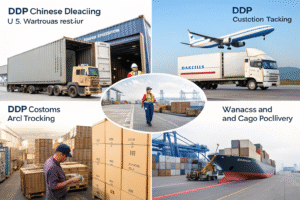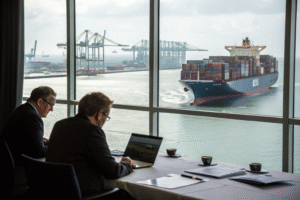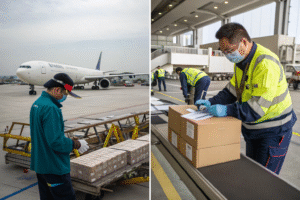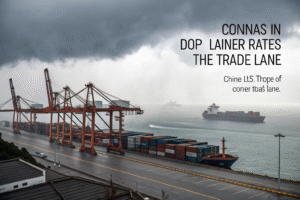If you’ve ever shipped from China to the U.S., you’ve probably heard different answers about delivery time. Sometimes it's 18 days. Other times, it’s more than 40. What’s going on?
Sea shipping from China to the U.S. usually takes 18 to 40 days, depending on the port of origin, destination, shipping method, and external delays like congestion or weather.
Understanding the timeline helps you plan better, save on storage costs, and avoid stockouts. As a freight forwarder, I’ve walked many U.S. clients through these timeframes. Let me explain it clearly.
Average transit times for China–USA sea freight
The first question most buyers ask is: “How long does it actually take?” They’re looking for predictability. But there’s no single answer — only a range.
On average, sea freight from China to the U.S. takes 20 to 35 days for West Coast ports and 30 to 45 days for East Coast ports. Inland U.S. delivery adds another 3–7 days.

What are the standard shipping times from key ports?
Here’s a breakdown of typical port-to-port transit times (not including origin or destination handling):
| From (China) | To (USA) | Transit Time |
|---|---|---|
| Shanghai | Los Angeles | 15–18 days |
| Ningbo | Oakland | 18–22 days |
| Shenzhen | Long Beach | 16–21 days |
| Qingdao | New York | 30–35 days |
| Xiamen | Savannah | 32–38 days |
These numbers assume normal port activity and sailing schedules. They don’t account for customs, warehouse handling, or inland trucking.
We always advise clients like Ron to factor in 7–10 extra buffer days for full DDP door-to-door service. That way, if there’s a delay, you won’t be caught off guard.
Do faster ships really make a big difference?
Yes, but only to a point. “Fast boats” can shave off 2–4 days. But if your cargo gets stuck at customs or port congestion hits, that speed advantage disappears.
That’s why we say: shipping is about planning, not racing. At GeeseCargo, we optimize transit speed and reliability — that’s how you win in the long run.
Shipping time differences: FCL vs. LCL
Many importers assume all sea freight takes the same time. But there’s a big difference between full and partial container shipping — not just in cost, but in timing.
FCL (Full Container Load) shipments are faster than LCL (Less than Container Load), usually by 3–7 days. That’s because LCL involves more handling, sorting, and waiting for consolidation.

Why is LCL slower than FCL?
Let’s compare the processes side-by-side:
| Process Step | FCL Time | LCL Time |
|---|---|---|
| Booking | 1–2 days | 2–5 days |
| Container Stuffing | Immediate | Wait for consolidation |
| Port Handling | Faster | Slower due to de-consolidation |
| Customs | Independent | Affected by other cargo in the container |
| Delivery | Direct | May include warehouse sorting |
LCL shipments often stop at a CFS warehouse (Container Freight Station) before final delivery. That adds 2–4 days. Also, if one of the other LCL customers has incomplete paperwork, it can delay the whole box.
Should you always choose FCL for speed?
If your volume justifies it, yes. Even if you can’t fill a full 20-foot container, paying slightly more for FCL could save a full week in transit.
One of our clients in Florida switched from LCL to FCL last year, even though his container wasn’t 100% full. The result? He got his goods 6 days earlier — and saved thousands in missed sales.
Fastest ocean routes from China to the USA
Time matters, especially when your inventory is seasonal or demand is high. So which routes should you choose if speed is your top priority?
The fastest ocean shipping route from China to the U.S. is from Shanghai or Ningbo to Los Angeles or Long Beach — taking just 15 to 18 days under normal conditions.

What are the most time-efficient port pairs?
Here are the quickest sailing routes used by most GeeseCargo clients:
| Route | Transit Time | Notes |
|---|---|---|
| Shanghai → Los Angeles | 15–18 days | Most direct, frequent sailings |
| Ningbo → Long Beach | 16–20 days | Great for East China suppliers |
| Shenzhen → Oakland | 17–22 days | Solid for South China exports |
| Xiamen → Tacoma | 20–24 days | Less congestion, slightly longer route |
When time matters most, we recommend these strategies:
- Choose carriers with direct services, no transshipment
- Book premium space during peak season
- Avoid routes with known customs backlogs (e.g., New York in Q4)
We’ve helped clients win retail contracts just by arriving a week earlier than their competitors — all because of better routing and early booking.
Are there hybrid options like sea-air?
Yes. If you need something faster than sea but cheaper than air, we offer sea-air combo services. This might involve:
- Shanghai to Dubai by sea
- Dubai to Los Angeles by air
Transit time: ~12–14 days. It’s a smart compromise if you’re facing stockouts or urgent orders but still need to save on cost.
How port congestion affects shipping time
Even if your shipping route is short, port congestion can ruin your plans. We saw this happen during COVID, but it still happens during peak seasons today.
Port congestion in China or the U.S. can delay sea shipments by 5 to 15 extra days. These delays occur during holidays, strikes, weather events, and container shortages.
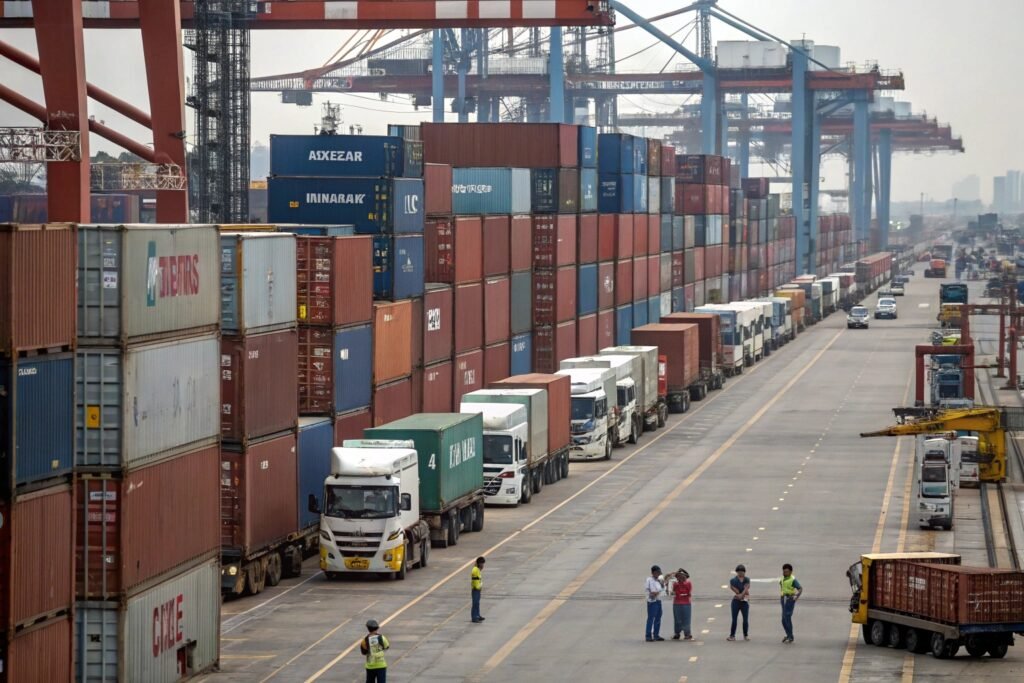
What causes port congestion — and where is it worst?
Common reasons for congestion include:
| Cause | Description |
|---|---|
| Holidays | Chinese New Year and U.S. Thanksgiving cause backups |
| Labor Strikes | Terminal workers may walk out (e.g., LA strikes in 2023) |
| Container Imbalance | Too many empties in one region slow down operations |
| Limited Yard Space | Ports run out of space for incoming containers |
| Customs Inspection Delays | Holds at destination due to documentation issues |
Worst-affected ports (2025 prediction):
- Long Beach & Los Angeles: Still recovering from infrastructure stress
- Ningbo & Shanghai: High volume, especially before major holidays
- New York & Savannah: Weather disruptions and high import pressure
At GeeseCargo, we use port-level data to re-route cargo when congestion hits. For example, if Long Beach is full, we switch to Oakland or Seattle. We also pre-clear customs whenever possible.
What can you do to avoid delays?
Here’s how to minimize delay risks:
- Ship 2 weeks earlier than usual during Q4
- Use FCL to avoid shared-container hold-ups
- Provide full and accurate documents — no missing HS codes or invoices
- Ask your forwarder for port congestion forecasts
Our clients receive weekly updates on U.S. and Chinese port statuses. It’s part of our commitment to make shipping feel predictable, even when the world isn’t.
Conclusion
Sea shipping from China to America can be fast and smooth — if you know what to expect. Whether it’s FCL vs. LCL, port-to-port vs. door-to-door, or holiday planning, the key is working with a freight partner who keeps you informed and ahead of schedule.
